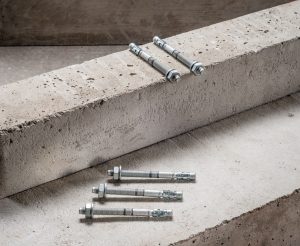
Wall plugs, or what’s more commonly known as wall anchors, are fasteners used to support another fastener like a screw that’s driven into a weak or brittle surface. As the name suggests, they are most commonly used in walls, such as drywall or plaster. If the wall isn’t able to load held by the fastener, a wall anchor may be used. To learn more about wall anchors and how these fasteners work, keep reading.
Origins of the Modern Wall Anchor
The modern wall anchor has origins dating back to the early 20th century. In 1911, British engineer John Rawlings invented the world’s first wall anchor. Known as the Rawlplug, it was extensively beginning in the 1920s to support light fixture installations.
Around this time, consumers and businesses alike were upgrading their properties with new lighting. Most of the homes and buildings at the time, however, were made of brick, and the brittle nature of brick made it difficult to install light fixtures. This prompted consumers and businesses to begin using wall anchors. By driving a wall anchor into the brick, they could install a light fixture without damaging the wall.
How Wall Anchors Work
Wall anchors aren’t always needed. If the area of the wall in which a fastener is being installed has a stud behind it, the stud will likely accommodate its load, meaning a wall anchor isn’t needed. The problem is that studs aren’t always available. In a typical home or building in the United States, studs are spaced 16 to 24 inches apart. If you want to install a load-bearing fastener on a different area of a wall, you may need to use a wall anchor.
There are different types of wall anchors, but most work in a similar manner. Wall anchors are made of a soft material, such as plastic, with a hollow and threaded interior that expands into the wall as the fastener is driven into them. To use a wall anchor, you must first drill a small pilot hole into the wall. Next, place the wall anchor directly over the pilot hole, at which point you can gently hammer it into the wall.
After the wall anchor is inserted into the wall, you can drive the fastener into it. The threaded interior of wall anchors allows them to securely hold screws. Using a Phillips head screwdriver, drive the screw into the wall anchor. As the screw pushes its way into the wall anchor, the sides of the wall anchor will expand into the surrounding material of the wall.
